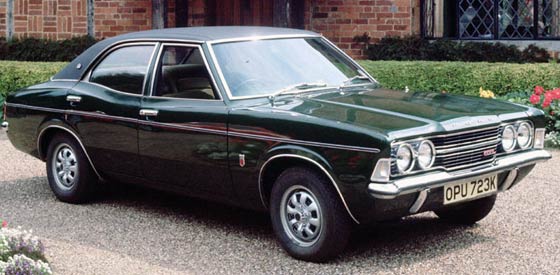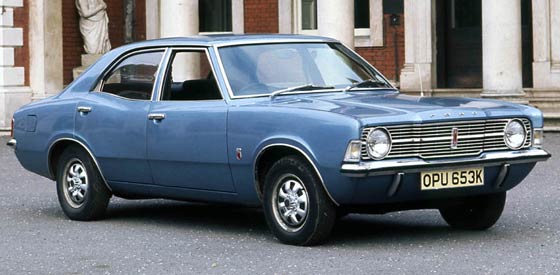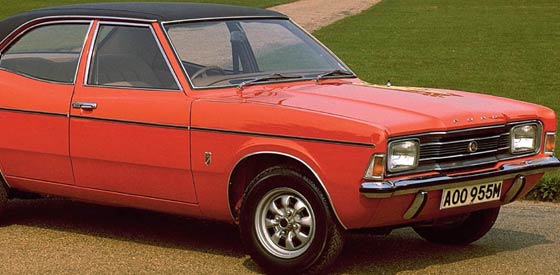As a car nut firmly into his 40s, what we now think of as ‘modern classics’ have always played a big part in my motoring life.
That’s why over the coming months (or as long as Drive will have me) I’ll be writing about the cars that have caught my imagination over the years, and which I hope might bring back a few fond memories. Some you’ll hopefully like, others you probably won’t, but whatever you think of my choices I look forward to hearing your views.
And for this first feature, it seems rude not to take a look at a car that has perhaps done more than any other to keep the motoring masses on the road, the wonderful Ford Cortina Mk III.
The Ford Cortina Mk III
Tell Me More
Introduced to an expectant public in 1962 the Cortina had already seen two iterations before the Cortina Mk III model made its bow in 1970. Influenced by American cars of the time, the ‘coke-bottle’ styling of the Mk III was quite a departure for the conservative Dagenham company. Previous Cortinas lacked much in the way of curves, designers instead preferring to stick to the ruler for the three-box bodyshells, but the Mk III was aimed at a more style-conscious buyer. It also became a firm favourite with TV directors, taking a starring role in many a 70s cop show as transport for hard-bitten detectives or villains. Private eye Eddie Shoestring (remember him?) even chose an orange estate model as the perfect car for pursuing felons.
Available in trims ranging from lowly ‘L’ to exec-level ‘GXL’, around 1.1m cars were to find homes before production ended in 1976. Ford offered a variety of engines, relying on well-proven ‘Kent’ and ‘Pinto’ units in 1.3, 1.6, and 2.0 flavours. The 1.3 was pretty anaemic and appeared lost in the spacious engine-bay, but the 2.0 unit had enough go to make the most of the Mk IIIs new coil and wishbone suspension set-up and accurate rack and pinion steering.
High-spec models could be identified by the four headlamps and Rostyle wheels, while tasty extras such as a vinyl roof and faux wood trim enticed plenty of buyers. The sloping instrument panel and deeply-recessed dials added a further dash of style to what was actually a pretty spacious and comfortable interior. Ideal then for reps thrashing up and down the expanding motorway network.
Buying One
It’s a British classic car from the 1970’s and that means only one thing. Rust, and lots of it. If you are looking to buy a Mk III then you need to spend plenty of time exploring every inch of the monocoque shell for signs of the dreaded tin-worm. Floorpan, wings (inner and outer), sills, doors, front and rear valances, and suspension mounting points should all come in for close attention. Don’t underestimate the time and money that will be required in trying to rescue a seriously rotten example.
Engines on the other hand are a far simpler proposition. Fundamentally strong and based on proven technology, it is really a case of checking for excessive exhaust smoke, oil leaks, and weak cooling systems that may have caused the head gasket to blow. Worn camshafts and clattery valve-gear can be common too but a quick listen under the bonnet will give the game away. Regular maintenance is the key and with engines that are so DIY-friendly there is little reason to get landed with a motor on its last legs. Parts are cheap and easily available. A noisy gearbox or differential will be obvious on the test drive, but again are fairly cheap to rectify. The rest of the running gear is straightforward, so a matter of checking for general wear and tear in suspension and brake components.
Interiors weren’t exactly robust so unloved and abused examples will be pretty tatty by now. A case of buying the best you can find then, but a thriving club scene makes finding replacement bits fairly easy and a complete re-trim won’t break the bank.
Verdict
Stylish and easy to maintain (rot aside), it’s hard to see why you wouldn’t want such a classic Ford. Cheap to run and with fantastic owners club support, the Mk III is a great way to re-visit the ‘70s. I’ve got good memories of a college friend’s car – all multi-coloured panels and high-back seats – and I could easily be tempted to take another look. Definitely a GXL for me….
Read More about The Ford Cortina at the Goodwood Revival
Read more Drive/Modern Classics by Chris Randall



